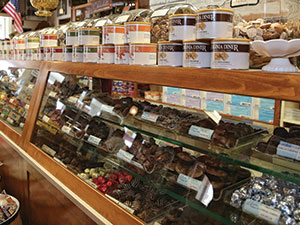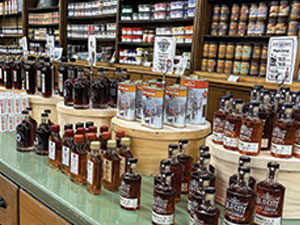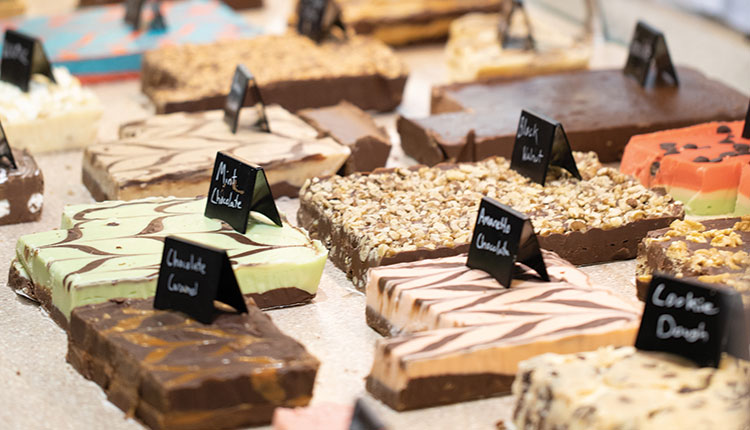Make food and drink a must-have memorable souvenir with these tasteful strategies.
When people think of souvenirs, often T-shirts or magnets come to mind, but food and drink is also a great way to help tourists savor their time in your area. Different regions are known for their popular dishes, beverages or cuisines. Visitors can try those out at local restaurants, but they can’t take that food home with them. That’s where your store comes in. Destination retailers can cater to these tourists by offering popular food and drinks in their shops.
Jonathan Raduns is founder of Merchandise Food, a retail food strategy and merchandising consultancy. Through his work, he has found that up to 76% of food purchases in grocery stores are impulsive.
For destination retailers, food products make great gifts for loved ones as well as snacks to take on the road.
“Food is an incredible opportunity to drive business,” says Raduns, adding that food can also encourage repeat business.
Tasteful selectionsDestination retailers have plenty of options when it comes to nonperishable foods to carry, such as chocolates, preserves and snacks. The key is focusing on products that are a local hit.
Cindy Walker, owner of Quechee General Store in Quechee, Vermont, says her food merchandise is primarily tied to popular local flavors and brands.
 An assortment of chocolates and other candy make great giftable souvenirs at Seaside Country Store. “We love maple, made in Vermont — and if not Vermont, New England,” she says. “I also pay attention to what customers say, and many times they say, ‘I’m looking for Vermont wine.’ So I’ve embraced Vermont wines and have quite a large wine display area.”
Homemade fudge is also a hit for some retailers, such as Seaside Country Store in Fenwick Island, Delaware. Owner Amy Vickers says customers love the aroma of fudge that wafts through the store. She adds that using real ingredients rather than extracts in the fudge also helps to improve the taste.
Topsail Island Trading Co. has featured a 14-foot-long fudge counter at its Surf City, North Carolina, store ever since it partnered with Calico Cottage in the late 1980s. Owner John Noto says the store has a selection of 24 to 30 flavors at the fudge counter (with more flavors stored underneath the counter) for customers to choose from.
Locally made foods and quirky hot sauce flavors are sure to attract customers, but Raduns suggests that retailers keep things simple and offer just the top four or five varieties in a vendor’s food line rather than the whole collection.
“Don’t go into things too deep,” he explains. “Just because a vendor offers eight types of kombucha doesn’t mean you need to carry all of them. Pick just two to three to start.”
Trying promotes buyingIn addition to eye-catching displays, offering samples is a great way to boost sales on popular food products.
Weekly cheese tastings are a hit at Quechee General Store, enticing people to stop in. Walker adds that offering samples also gives her and her team a chance to talk to customers more about the products.
Fudge is always available to sample at Topsail Trading Co., with Noto sharing that fudge makes up one-third of the retailer’s sales every year.
The Surf City retailer doesn’t like to set out DIY sample stations anymore to avoid the mess, but Noto says he’ll always allow customers to sample different food items if they request that.
 Vermont-made maple syrup and spices are popular picks at Quechee General Store. “I hate to say no to a customer, so I’ll have some sample spoons and product ready for customers to sample at our fudge counter,” he explains. “If a customer has never tried a quail egg before, I’ll open up a jar so they can taste it. It’s worth it — you make sales on that kind of stuff.”
He adds, “If you can sample things, by all means, do it. If customers taste it and like it, that’s what’s going to sell it.”
Final food for thoughtThere are a few other things to keep in mind when adding or expanding their food category. Raduns says customers expect a higher level of cleanliness if a shop sells food items.
It’s also important to offer a mix of core food items and some seasonal varieties, he adds.
“Find things that customers like and love for core products,” he says. “Then supplement with seasonal items that move in and out. This gives customers a reason to come back to your store all year.”
|



